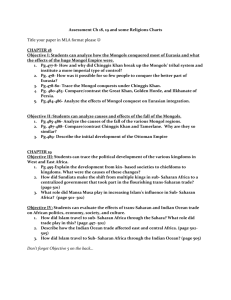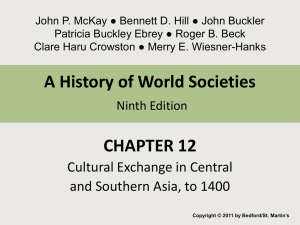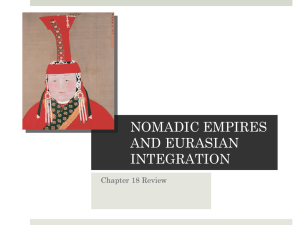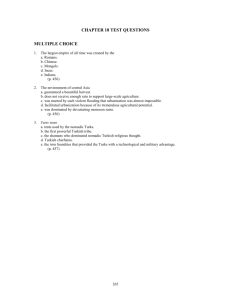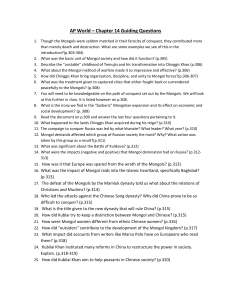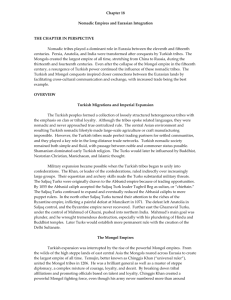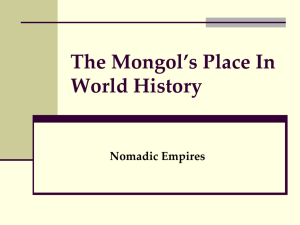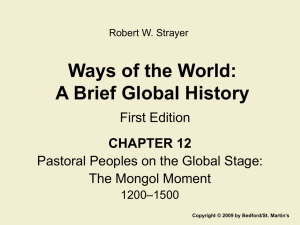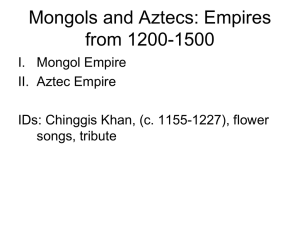Leadership Analysis: Chinggis Khan
advertisement
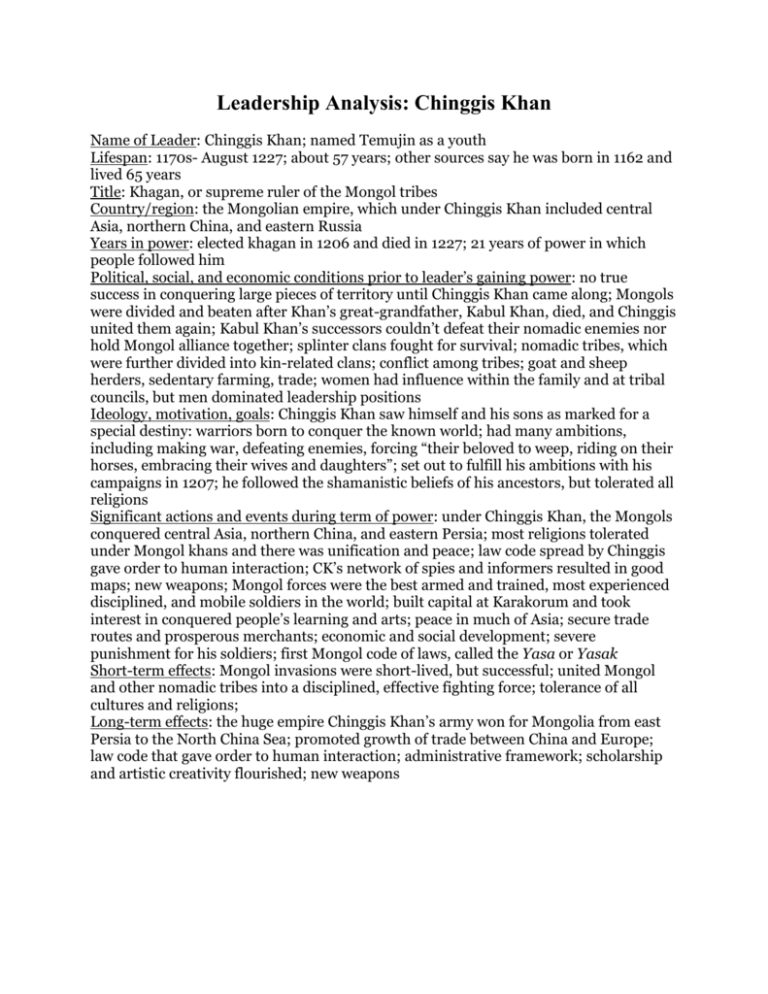
Leadership Analysis: Chinggis Khan Name of Leader: Chinggis Khan; named Temujin as a youth Lifespan: 1170s- August 1227; about 57 years; other sources say he was born in 1162 and lived 65 years Title: Khagan, or supreme ruler of the Mongol tribes Country/region: the Mongolian empire, which under Chinggis Khan included central Asia, northern China, and eastern Russia Years in power: elected khagan in 1206 and died in 1227; 21 years of power in which people followed him Political, social, and economic conditions prior to leader’s gaining power: no true success in conquering large pieces of territory until Chinggis Khan came along; Mongols were divided and beaten after Khan’s great-grandfather, Kabul Khan, died, and Chinggis united them again; Kabul Khan’s successors couldn’t defeat their nomadic enemies nor hold Mongol alliance together; splinter clans fought for survival; nomadic tribes, which were further divided into kin-related clans; conflict among tribes; goat and sheep herders, sedentary farming, trade; women had influence within the family and at tribal councils, but men dominated leadership positions Ideology, motivation, goals: Chinggis Khan saw himself and his sons as marked for a special destiny: warriors born to conquer the known world; had many ambitions, including making war, defeating enemies, forcing “their beloved to weep, riding on their horses, embracing their wives and daughters”; set out to fulfill his ambitions with his campaigns in 1207; he followed the shamanistic beliefs of his ancestors, but tolerated all religions Significant actions and events during term of power: under Chinggis Khan, the Mongols conquered central Asia, northern China, and eastern Persia; most religions tolerated under Mongol khans and there was unification and peace; law code spread by Chinggis gave order to human interaction; CK’s network of spies and informers resulted in good maps; new weapons; Mongol forces were the best armed and trained, most experienced disciplined, and mobile soldiers in the world; built capital at Karakorum and took interest in conquered people’s learning and arts; peace in much of Asia; secure trade routes and prosperous merchants; economic and social development; severe punishment for his soldiers; first Mongol code of laws, called the Yasa or Yasak Short-term effects: Mongol invasions were short-lived, but successful; united Mongol and other nomadic tribes into a disciplined, effective fighting force; tolerance of all cultures and religions; Long-term effects: the huge empire Chinggis Khan’s army won for Mongolia from east Persia to the North China Sea; promoted growth of trade between China and Europe; law code that gave order to human interaction; administrative framework; scholarship and artistic creativity flourished; new weapons

